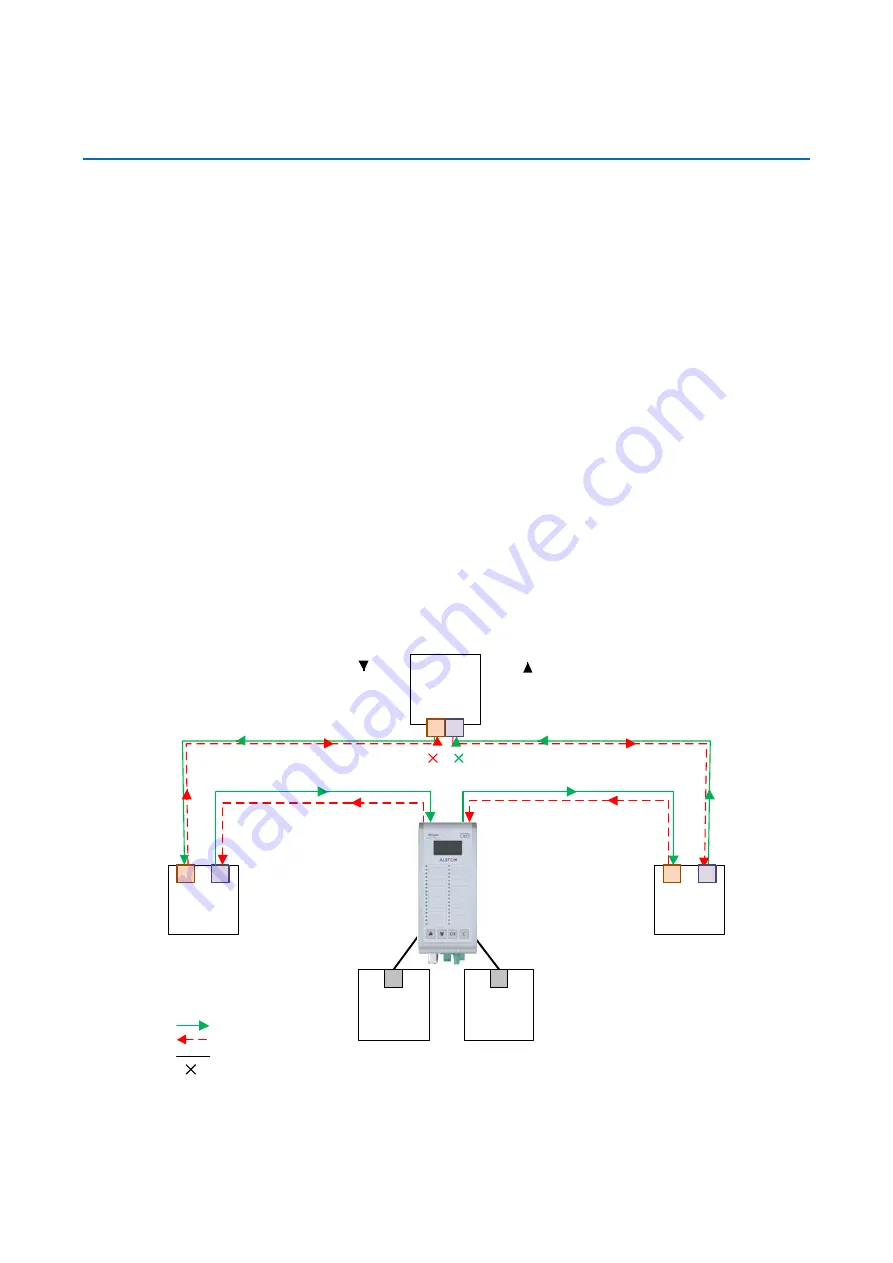
Technical Manual
GE Reason H49
22
H49/EN M/C22
4.3
High-availability Seamless Redundancy (HSR) Protocol
The HSR protocol is implemented accordingly to IEC 62439-3 (2016) Clause 5.
HSR allows seamless communication in case of a single network disruption (for
instance cable, driver, switch or controller failure).
An HSR-compatible device has two ports operating simultaneously, both ports being
connected to the same LAN. IEC 62439-3 (2016) Clause 5 assigns the term DANH
(Doubly Attached Node running HSR) to such devices. Reason H49 is a DANH.
The figure below shows an example of an HSR network. The doubly attached nodes
HSR RedBox, DANH 1 and DANH 2 send and receive HSR frames in both directions,
while the singly attached nodes SAN 1 and SAN 2 can only send and receive frames
without HSR header.
Singly attached nodes can, however, be connected to HSR ring, via a device which
converts a singly attached node into a doubly attached node. Devices performing this
function are often referred to as redundancy boxes or RedBoxes. Thus, devices with
single network cards such as personal computers, printers, etc., are singly attached
nodes that may be connected to the HSR network via a RedBox as shown in the
figure.
Because these SANs are connected to the HSR network, they can be considered as
Virtual Doubly Attached Nodes and described as VDANs.
DANH 3
DANH 2
SAN 1
SAN 2
S1605ENa
"C" frame
from SAN
"D" frame
to SAN
"A" frame
"B" frame
Returning "B" frame is stopped
Returning "A" frame is stopped
“A” frames
“B” frames
non-HSR frames exchanged between ring and host
frame is removed from the ring by the node
H49
HSR RedBox
DANH 1
Figure 5: Example HSR Redundant Network
Summary of Contents for Reason H49
Page 10: ...Technical Manual GE Reason H49 10 H49 EN M C22 1 2 Ordering Options ...
Page 157: ......















































